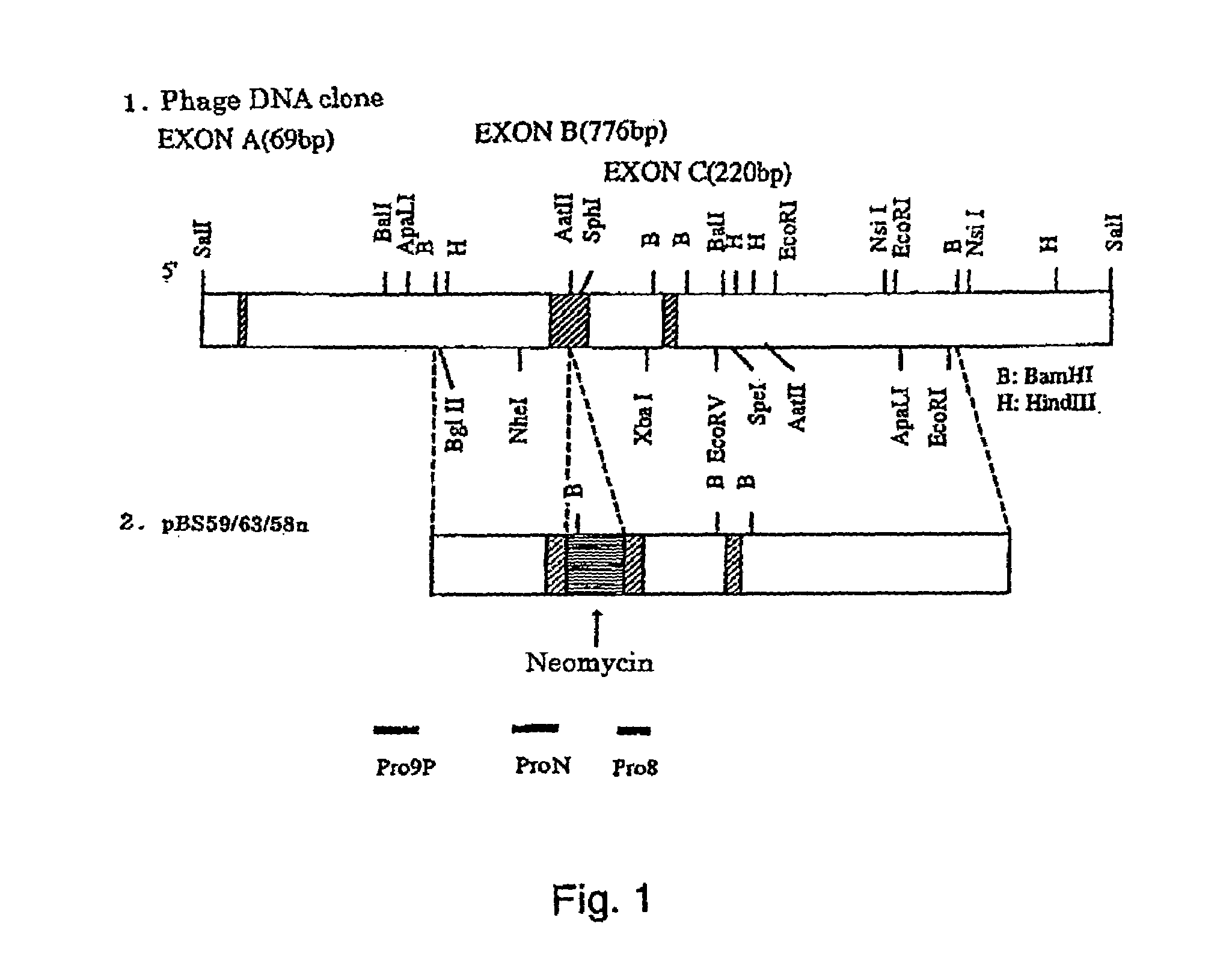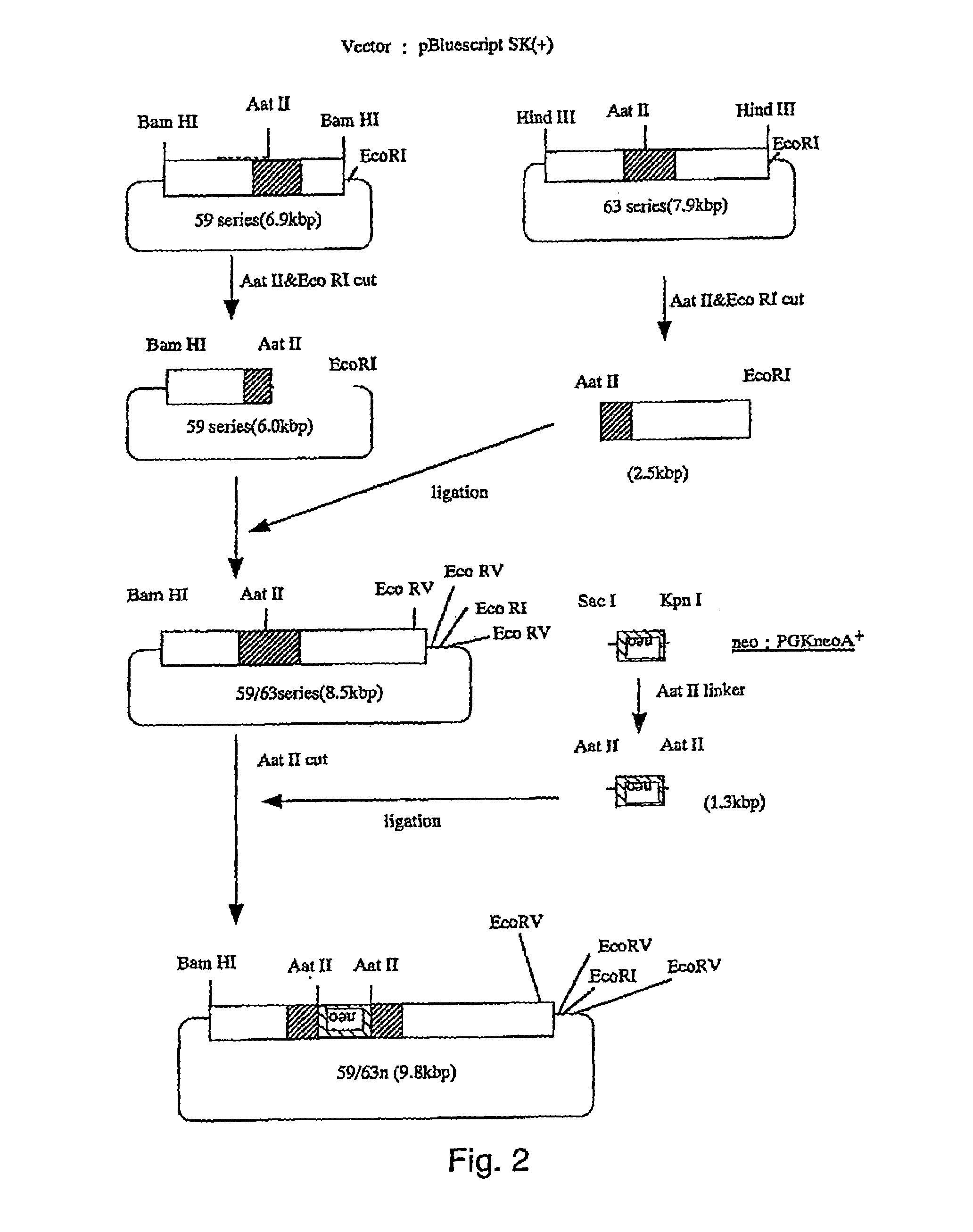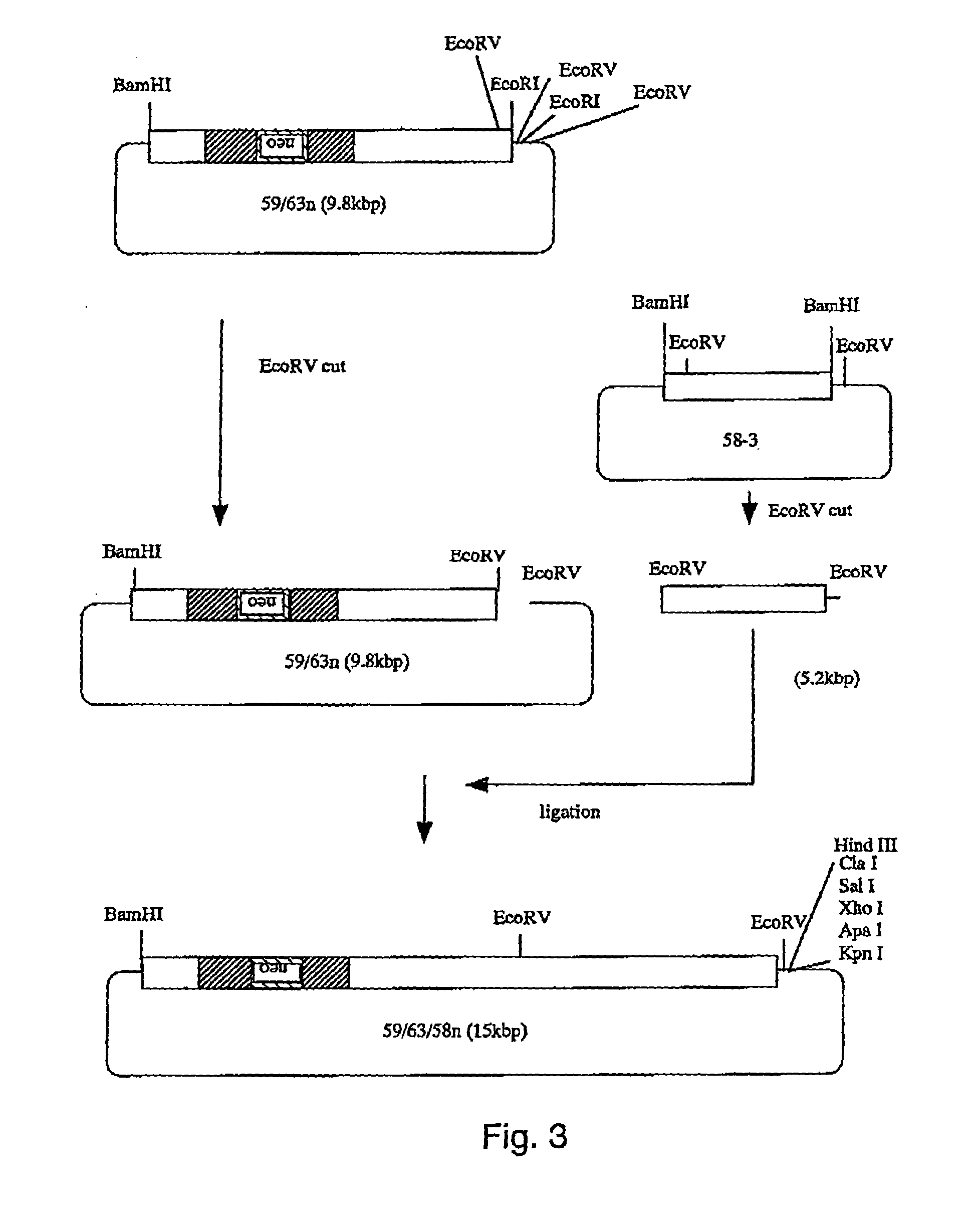N-calcium channel knockout animal
a calcium channel and knockout technology, applied in the field of animal deficient n-type calcium channel, can solve the problems of not being able to survive normally, not being able to maintain homeostasis, etc., and achieve the effects of low blood sugar level, low pain, and maintaining homeostasis
- Summary
- Abstract
- Description
- Claims
- Application Information
AI Technical Summary
Benefits of technology
Problems solved by technology
Method used
Image
Examples
example 1
Disruption of Gene Coding for N-type Ca Channel by Gene Targeting
(1) Cloning of Gene Coding for N-type Ca Channel α1B Subunit
[0076]Primers (SEQ ID NOS: 4 and 5) were designed based on the nucleotide sequence of the mouse α1B subunit gene described in FEBS Letters, 338, pp. 1–5, 1994, and PCR was performed by using the mouse cDNA library as a template to obtain DNA having the nucleotide sequence of SEQ ID NO: 6. By using this DNA as a probe, a phage DNA clone with a part of the gene coding for the N-type Ca channel α1B subunit was isolated from a 129SVJ-derived mouse genomic library (λFIXII). The restriction enzyme map of the obtained phage DNA clone is shown in FIG. 1.
(2) Construction of Targeting Vector
[0077]A targeting vector was prepared by a method wherein a region including exon B in the α1B subunit gene was used as a homologous gene region; a neomycin resistance gene was introduced into the exon B (FIG. 1), and the thymidine kinase gene of herpes simplex virus was introduced a...
example 2
Changes in Blood Pressure Upon Administration of ω-Conotoxin GVIA to Mouse
[0095]Changes in heart rate and blood pressure of a Wt mouse and those of an N-KO mouse due to the ω-conotoxin GVIA were evaluated. Wt mice (15- to 16-week old, male, body weight 28.2±3.2 g, n=4) and N-KO mice (15- to 16-week old, male, body weight 30.8±4.0 g, n=4) were anesthetized with 10% urethane. Following tracheal intubation, artificial respiration was performed by using an animal ventilator (Columbs) with a ventilation volume of 0.2 ml at a respiratory frequency of 140 breaths / min. A polyethylene tube filled with physiological saline containing heparin was inserted into the right common carotid artery and connected to a pressure transducer (Millar, Model MPC-500) to measure the blood pressure. Further, a catheter was indwelled in the left common carotid artery to administer ω-conotoxin GVIA (omega-CgTx GVIA, 30 μg / kg).
[0096]The results are shown in FIG. 7. The values in the figure are average values, an...
example 3
Experiment about Blood Pressure Control Mechanism—Examination of Blood Pressure Change with Bilateral Carotid Occlusion
[0098]Blood pressure changes with bilateral carotid occlusion (henceforth referred to as BCO) in a Wt mouse and an N-KO mouse were evaluated. Wt mice (15- to 16-week old, male, body weight 28.2±3.2 g, n=4) and N-KO mice (15- to 16-week old, male, body weight 30.8±4.0 g, n=4) were anesthetized with 10% urethane. Following tracheal intubation, artificial respiration was performed by using an animal ventilator (Columbs) with a ventilation volume of 0.2 ml at a respiratory frequency of 140 breaths / minute. A polyethylene tube filled with physiological saline containing heparin was inserted into the right common carotid artery and connected to a pressure transducer (Millar, Model MPC-500) to measure the blood pressure. Further, a silk thread (Natsume, suture needle with thread, Black broad silk No. 8-0) for artery occlusion was placed on the left common carotid artery, an...
PUM
 Login to View More
Login to View More Abstract
Description
Claims
Application Information
 Login to View More
Login to View More - R&D
- Intellectual Property
- Life Sciences
- Materials
- Tech Scout
- Unparalleled Data Quality
- Higher Quality Content
- 60% Fewer Hallucinations
Browse by: Latest US Patents, China's latest patents, Technical Efficacy Thesaurus, Application Domain, Technology Topic, Popular Technical Reports.
© 2025 PatSnap. All rights reserved.Legal|Privacy policy|Modern Slavery Act Transparency Statement|Sitemap|About US| Contact US: help@patsnap.com



